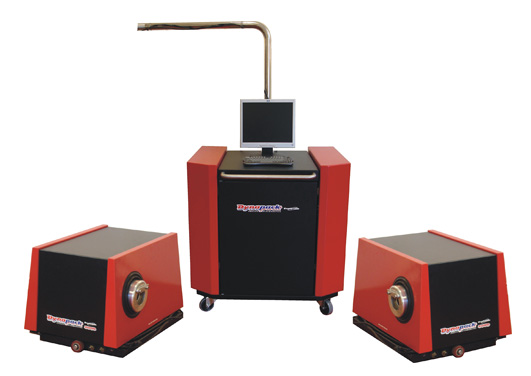Benefits of Dynapack
THE MODULAR DESIGN OF THE DYNAPACK LENDS ITSELF TO MANY APPLICATIONS THEREBY PROVIDING COST EFFECTIVE SOLUTIONS TO ENGINEERS, TUNERS, PRODUCT DEVELOPERS, OEM’S, EXHAUST MANUFACTURERS AND OF COURSE MANY AFTERMARKET APPLICATIONS WHERE ALTERNATIVE PARTS AND TUNING METHODS CAN ENHANCE VEHICLE PERFORMANCE AND FUEL ECONOMY.
WHETHER YOU ARE DEVELOPING ELECTRIC VEHICLES, HYBRID VEHICLES, AUTOMOTIVE DEVELOPMENT COMPANY, RACE TEAM, TUNE SHOP, OR AN OEM NEEDING INDEPENDENT TORQUE VECTORING ON 2 AND 4WD VEHICLES WE HAVE SOLUTIONS THAT MEET YOUR NEEDS IN OUR RANGE OF 2WD AND 4WD CHASSIS DYNAMOMETERS.
The high standards and intense focus of Dynapack engineers has created the most sought after dynamometer on the market today and is chosen by those who want no nonsense performance and reliability for their company and their customers. Low operational costs and innovative technology allow you to control an 800kW engine with an 800 watt single phase power outlet on our high performance product range.
The Dynapack™ direct couples to the wheel hubs and applies a precisely controlled hydraulic load. This method of direct coupling plus its built-in strength means the Dynapack™ is always in control of the vehicle.
Controlling a powerful car on a roller dyno can sometimes be a daunting task. With Dynapack™ you have TOTAL CONTROL of the vehicle, with no wheel slip due to its direct coupled design. With that there is less inertia to mask the results, giving you greatly improved sensitivity, repeatability and significantly reduced time spent tuning and mapping!
With the power of the Dynapack™ literally at your fingertips, you have complete control over the test and the demands placed on the vehicle. Flexible data presentation and analysis is available direct from the Dynapack™ in seconds.
Dynapack™ chassis dynamometers are such a radical departure from the stereotypical roller dyno that it really is in a class of its own. Most of the previous assumptions made about chassis dynos (the roller type) simply do not apply to the Dynapack™ series.
The NEW RPM Input uses the primary input to the coil pack that is readily accessible to clip onto (Low Voltage) and the NEW TPS Input clips onto the wire of the Throttle Position Switch (0.5V – 4.5V in the general range). Both of these can be displayed on the Dynapack Live Strip graph.
The NEW DUAL LAMBDA and DUAL MAP system gives you the flexibility to retrieve additional data and read both AFR and Lambda at once.

